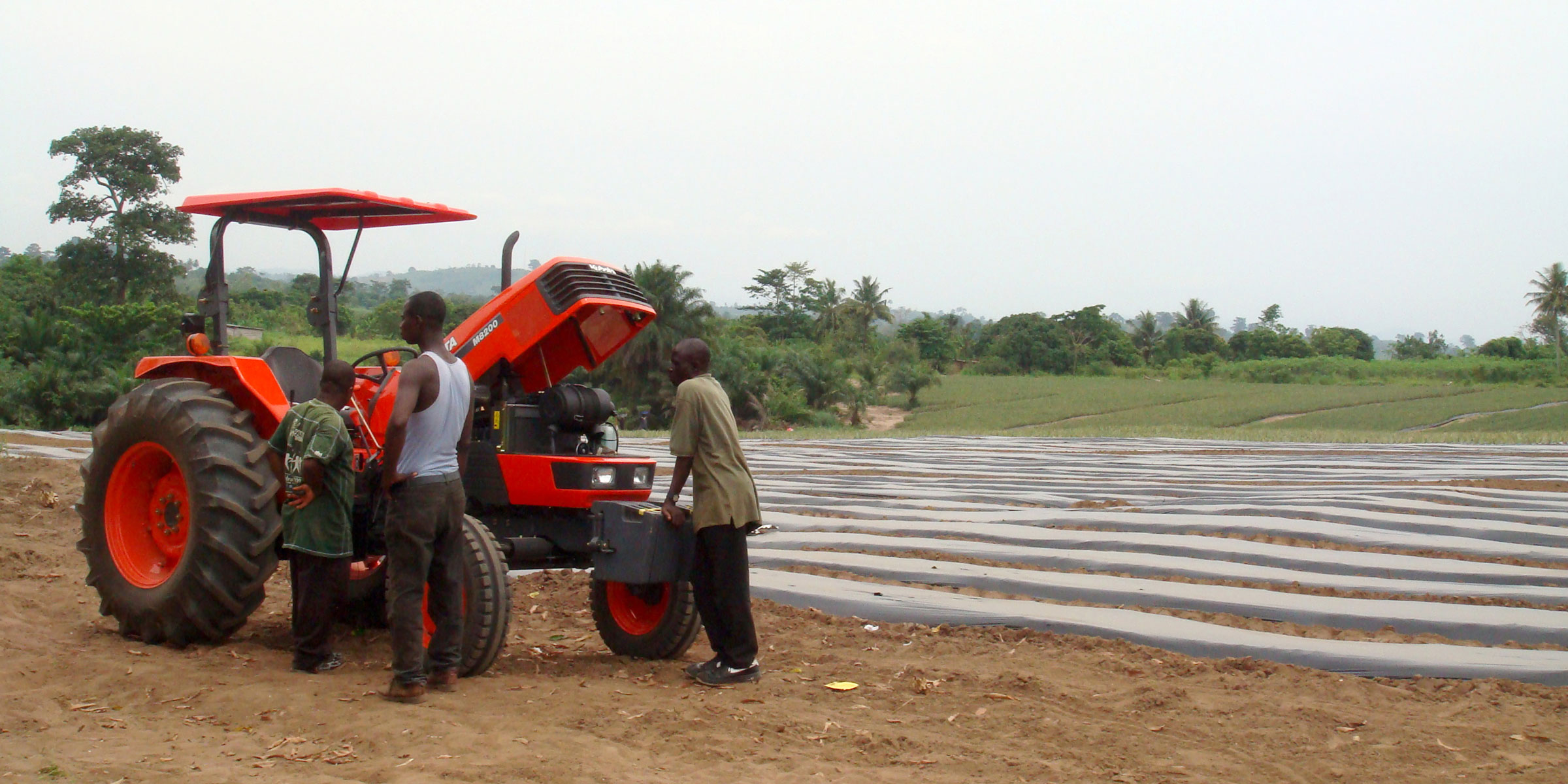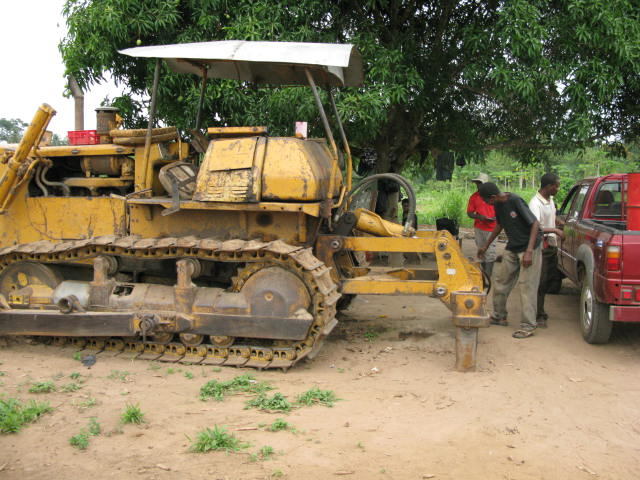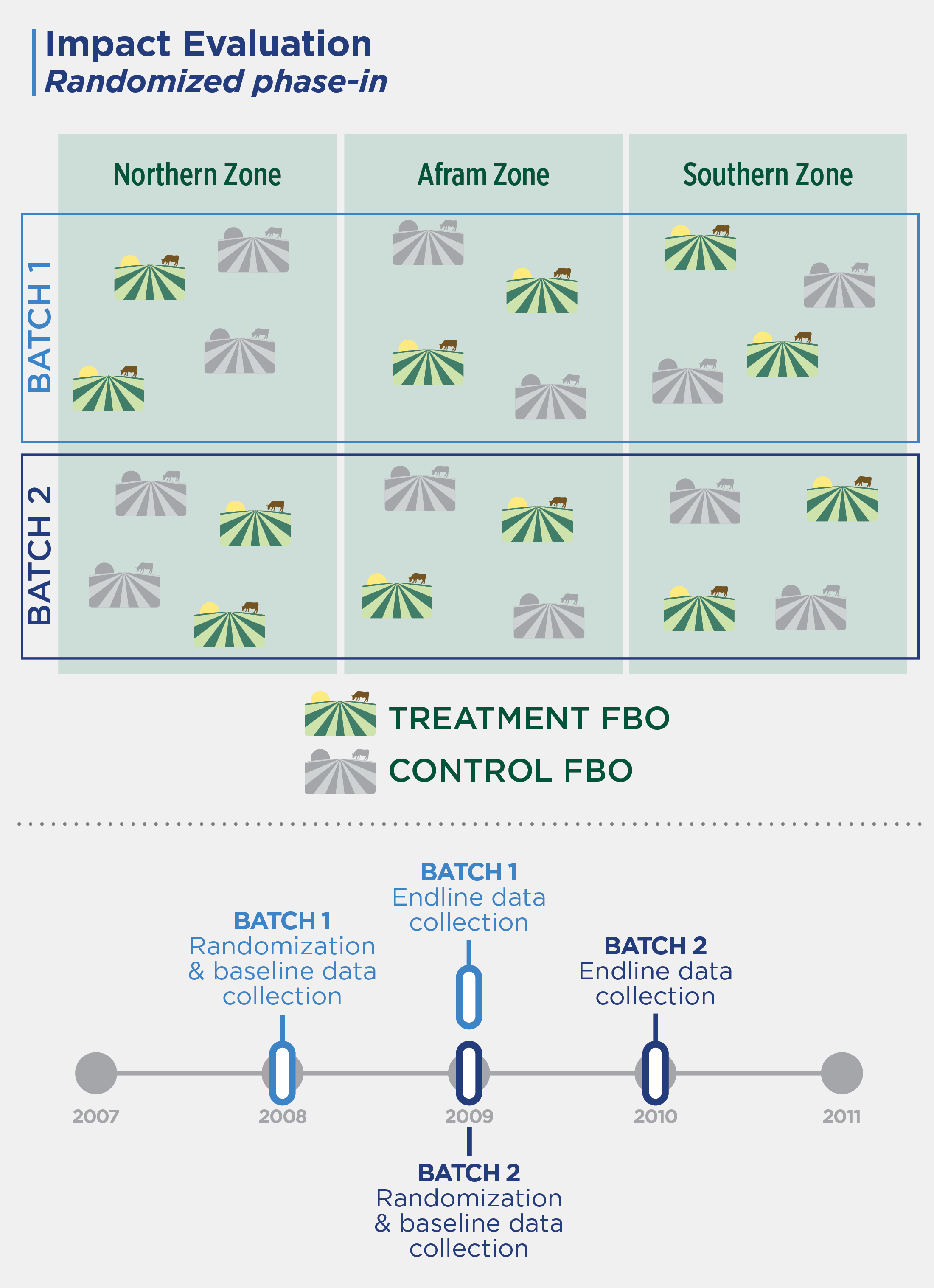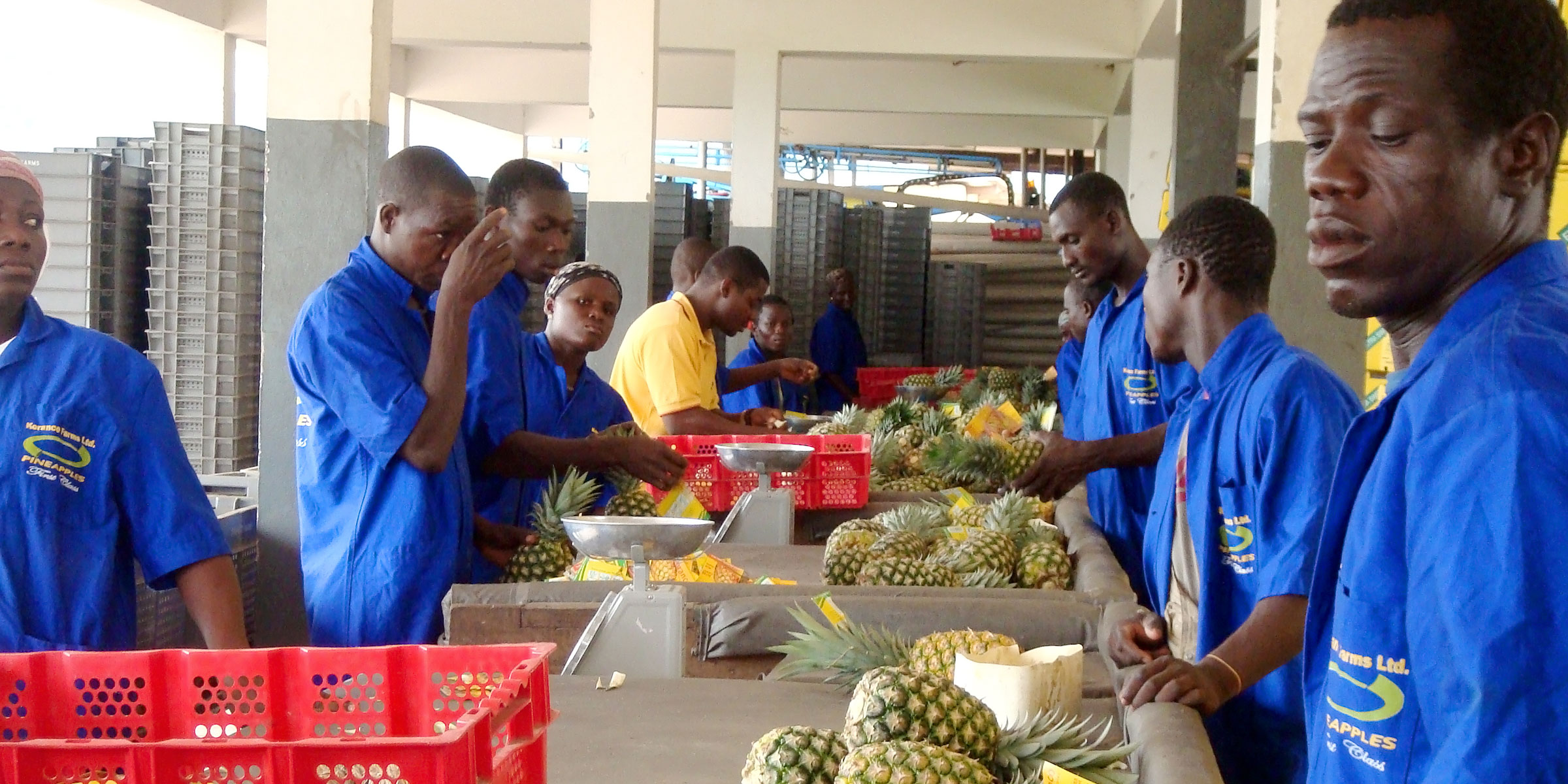Program Overview
MCC’s $547 million Ghana Compact (2007–2012) funded the $62.5 million Commercial Training Activity to improve commercial farming skills. The activity was based on the theory that improving farming skills would lead to higher crop yields and subsequently increase farmers’ household income. Projects were implemented in three areas that were selected based on high poverty rates and agricultural potential: the northern zone, the Afram zone and the southern zone.Key Findings
Crop Yields and Farmer Income
- Trainings and starter kits did not improve crop yields in any zone. However, farmer income in the northern zone increased relative to the control group, due to expansion in cultivated land.
Access to Credit
- Farmers targeted by the program were more likely to receive a formal loan than farmers in the control group. This included both loans from project funding and loans obtained in the open market.
- However, loan amounts were equivalent between farmers targeted by the program and farmers in the control group.
Farming Practices
- While the program provided starter kits with improved quality seeds to targeted farmers, these farmers were just as likely to use improved seeds as farmers in the control group.
- However, targeted farmers used more fertilizers and herbicides than farmers in the control group, indicating uptake of these inputs from the program starter kit.
- Overall, cultivated land and labor hours were equivalent between targeted farmers and farmers in the control group.
Evaluation Questions
This final impact evaluation was designed to answer the following questions. Did the training and starter kits…:- 1 …increase crop income and yields?
- 2 …change the value or source of loans that farmers obtained?
- 3 …increase the use of higher-quality inputs, such as seeds and agrochemicals?
- 4 …increase total land cultivated and labor hours for farm activities?
Detailed Findings
Crop Yields and Farmer Income

MCC hypothesized that providing farmers with the commercial training and starter kits would result in higher crop yields and thus higher farmer income. The impact evaluation found no improvements in crop yields in any zone relative to the control group. Despite no improvements in crop yields, farmer income increased 78 percent relative to the control group in the northern zone, possibly due to an expansion in cultivated land (32 percent). Farmer income in the treatment group was statistically equivalent to the control group in the Afram zone and 76 percent lower than the control group in the southern zone.
Access to Credit
The training’s commercial component prepared farmers to apply for loans for productive investment. Farmers in the treatment group were eligible to apply for a loan financed through the MCC project. The training was also supposed to build farmers’ capacity to acquire loans on their own merit from institutions, such as state, private and rural banks. Therefore, the impact evaluation tested farmers’ ability to acquire both project-funded and open market loans. Treatment farmers were more likely to receive a formal loan—both project-funded and open market loans—than farmers in the control group. However, while farmers in the treatment group were more likely to receive an open market loan than farmers in the control group, the sizes of open market loan amounts were statistically equivalent between the two groups.Farming Practices

MCC expected that the activity would increase land under cultivation, particularly in the Afram Basin. Overall, the activity neither led to increases in cultivated land nor to changes in labor hours for farm activities among targeted farmers relative to the control group. However, the impact evaluation found differential trends on cultivated land for each of the three zones. In the northern zone, farmers in the treatment group increased their cultivated land by 32 percent, whereas in the southern zone, farmers in the treatment group decreased their cultivated land by 54 percent. In the Afram zone, farmers in the treatment group had no change in their cultivated land.
MCC Learning
- Assumptions in the project logic did not question the training content or intensity, which appears to have been misaligned with farmer needs.
- While the starter kits were meant to incentivize training participation, their limited use among treatment farmers points to misunderstandings of farmer preferences.
- Program teams should maintain focus on local needs and causal pathways of change.
- Evaluators must be ready to adapt to implementation changes and delays so the evaluations remain robust and relevant to the reality on the ground.
Evaluation Methods

Data was collected using a large-scale household survey at baseline (2008 for batch 1 and 2009 for batch 2) and endline (2009 for batch 1 and 2010 for batch 2) from five farmers per FBO. In total, approximately 6,000 farmers were interviewed.
2021-002-2651


